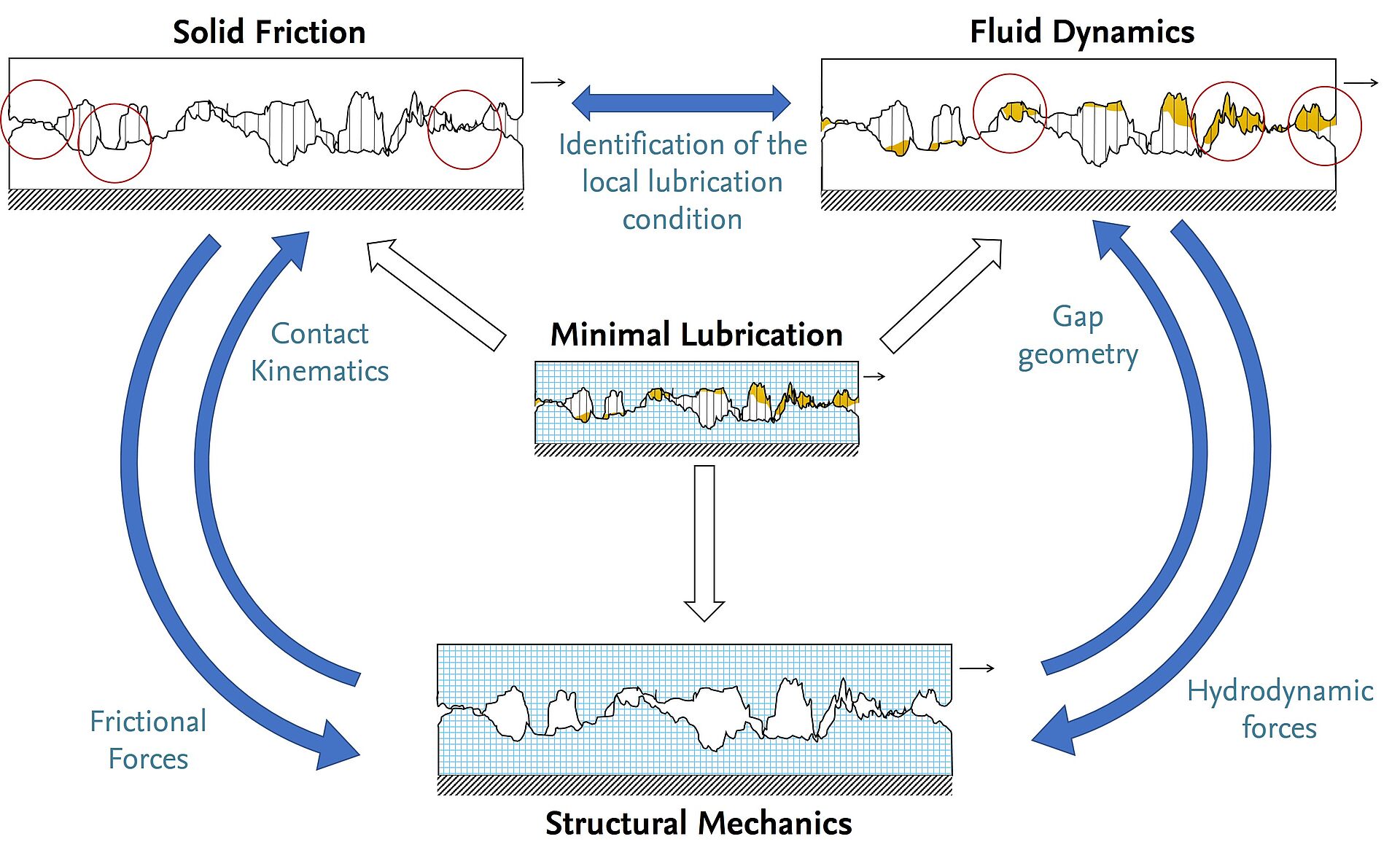
Currently, there is no comprehensive understanding of the contact behavior under the influence of fluid lubricants, particularly in tribological systems where the gap is only partially filled with fluid. This lack of understanding is most pronounced in systems where the filling ratio is substantially less than 1. A notable phenomenon has been observed in the realm of minimal lubrication, where the fluid filling ratio is 0.1 or lower. It indicates that even minimal amounts of fluid can significantly reduce the friction coefficient. However, a detailed characterization of this transition from dry friction to minimal lubrication, which is of significant practical importance (as in the case of water-wetted surfaces), demands much more sophisticated measurement techniques and advanced numerical analysis. In the context of a DFG project (project number 390252106), our Friction and Nonlinear Dynamics research group is focusing on modeling and experimental studies of such minimal lubricated contacts.
The lubricated contact problem is inherently multi-physical and involves the fluid-structure interaction (FSI) between hydrodynamics of the lubricant (including cavitation bubbles), the elastic deformations of solid structures and the frictional contact mechanics between solid surfaces. Our group aims to develop a numerical model in the framework of NURBS-based isogeometric analysis (IGA) to couple all these regimes together and to consistently describe the transition from solid contact to minimally lubricated contact.
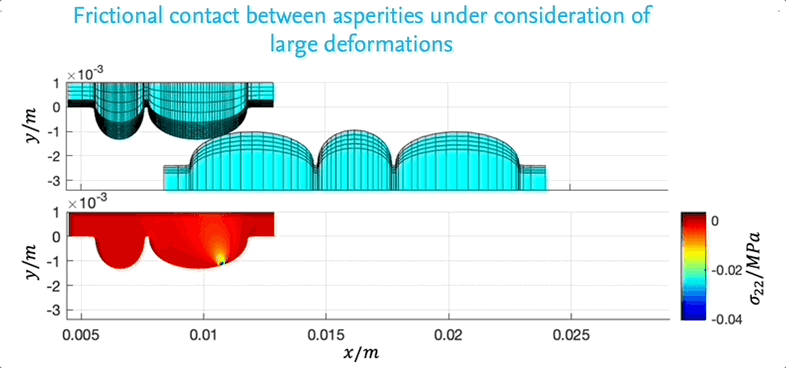
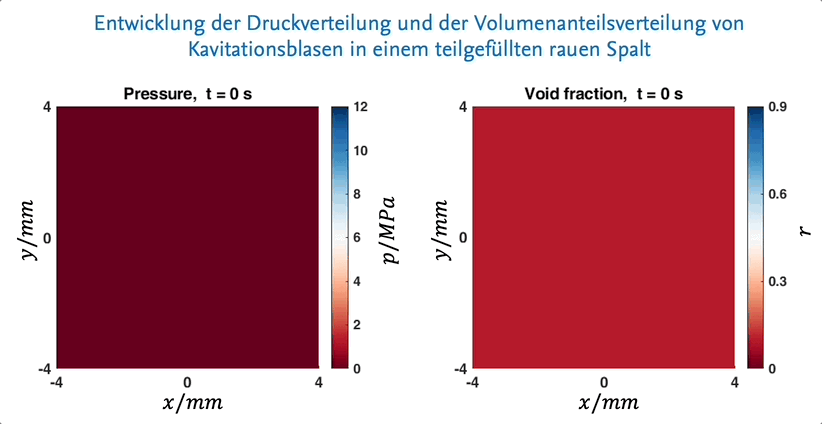
The experimental investigations of partially filled friction gaps are carried out in the microscopic and macroscopic range. The FLUCS (Fluid Contact TriboScope) was built to observe the friction gap in the macroscopic range. Two ornamental glass panes, which are used as a rough surface, are rubbed against each other in rotation so that the fluid distribution in the friction gap becomes visible. It is also possible to record the effects of different parameters. The effects on the coefficient of friction in the microscopic range are investigated using a high load tribometer (HLT for short). Different filling levels are also used in this size scale and their effects are observed. The aim of the experimental investigations is to create a comparison with the simulation results.
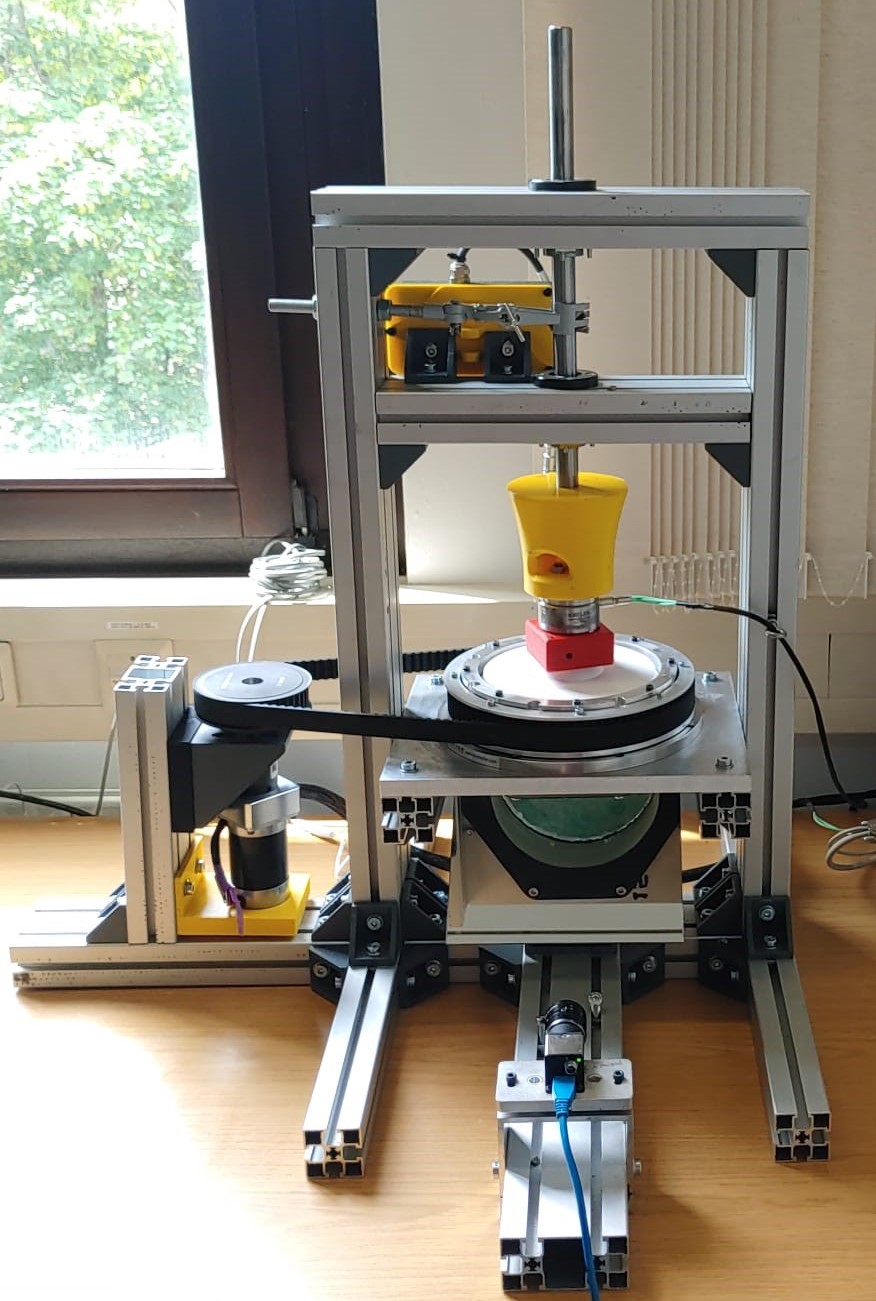
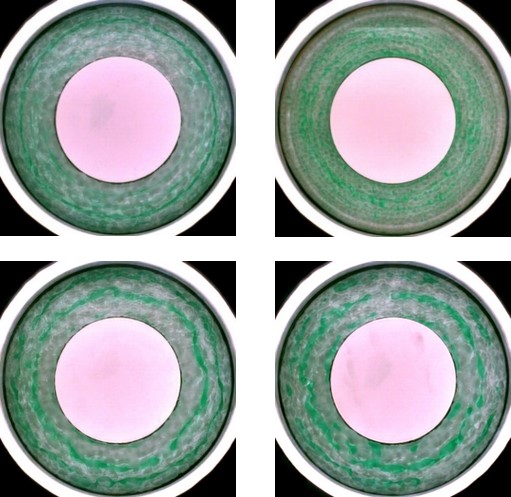
Tong, Y., Müller, M., & Ostermeyer, G. P. (2021). Investigations on the dynamic influence of the contact angle on frictional sliding processes between rough surfaces using NURBS and mortar-based augmented Lagrangian method. Tribology International, 158, 106889.
Tong, Y., Müller, M., & Ostermeyer, G. P. (2022). A mortar-based cavitation formulation using NURBS-based isogeometric analysis. Computer Methods in Applied Mechanics and Engineering, 398, 115263.
Tong, Y., Müller, M., & Ostermeyer, G. P. (2023). An arbitrary Lagrangian–Eulerian formulation for the Reynolds equation considering the JFO boundary condition. PAMM, 23(3), e202300216.
Vacancies of TU Braunschweig
Career Service' Job Exchange
Merchandising
Term Dates
Courses
Degree Programmes
Information for Freshman
TUCard
Technische Universität Braunschweig
Universitätsplatz 2
38106 Braunschweig
P. O. Box: 38092 Braunschweig
GERMANY
Phone: +49 (0) 531 391-0
